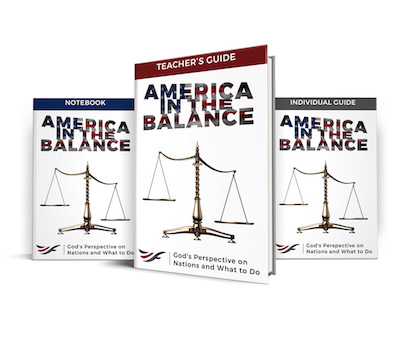Going into 2017, some have high aspirations for commodities. After a five-year bear market, commodities experienced a surge in prices on a wide variety of products in 2016.[1] Head of Commodities at Schroder, Geoff Blanning, wrote in May of 2016, “The biggest price gains, in percentage terms, occur at the beginning of a bull market. And the best (lowest risk) time to buy anything is when the consensus expectation is turning from bearish to bullish, as is happening now in commodities. Now is the time for investors to focus on this unloved asset class.”[2]
At the turn of the millennium, commodities entered into a decade-long bubble. Many factors encouraged this bubble, including such things as terrorism, war in the Middle East, near-zero interest rates, and quantitative easing.[3] Perhaps the most significant factor was China’s rapid development with an average annual GDP growth rate between the years 2000 and 2010 of 10.3%.[4] This produced a high demand for commodities which drove up prices and led to an overproduction. However, these prices began falling in 2011 as China’s GDP began tapering off, thus reducing demand in an overproduced market. China’s 2016 GDP is estimated at 6.6%.[5]
On Future Money Trends, founder of Dent Research, Harry Dent, warned:[6]
Businesses around the world, not just us, over-expanded in a boom that looked like it would go on forever and was highly leveraged by debt growing at 2.6 times GDP in the United States alone. And now demand globally is going down. I mean, the biggest joke in the world is that China says they’re growing at 7%. This is not the case. There’s no way iron ore would be down 80%—oil and coal down 70%—if China was growing at 7% because they’re the largest consumer of commodities—both their consumers and their industrial machine. China is probably growing at 3–4%. China has over-built everything—condos, houses, roads, infrastructures, industrial capacity—10, 12 years out. They moved … 500 million people in the last 25 years to cities, and half of that in the last 12 years. They’ve got 220 unregistered citizens with no skills in cities. And now that their produce-something-for-nothing economy—I mean, they’re building something for nobody—is starting to collapse. This is going to be a huge problem. So we’ve over-expanded—too much supply, and now global demand is going to go down, led by China, also generated by falling demographic trends in the whole developing world. And China’s collapse kills emerging countries where there are good demographics, and so you have this commodity collapse. And it’s going to continue.
However, an extended period of commodities trading below their marginal cost of production has caused producers worldwide to reduce their output and to cut investment in future projects.[7] Portfolio manager at Cohen and Steers believes that this has slowly rebalanced the market, saying, “We believe that this is part of a fundamental recovery and estimate most commodities are likely to achieve supply-and-demand equilibrium by the end of 2017.”[8]
Moreover, the election of Donald Trump as United States president has encouraged commodity investors. Demand for industrial metals is expected to rise because of Trump’s plan for infrastructure improvements. In fact, copper prices rose 11% in the week of Donald Trump’s election.[9] And those who are concerned that Trump’s policies will lead to inflation are seeking refuge in commodities. As Geoff Blanning says, “The primary reason for investing in commodities should always be as an inflation hedge. Given the continued printing of money by the world’s central banks, there is every reason to argue that higher inflation is coming in the future.”[10]
Certainly, there are many factors which have affected the commodities market, and these vary according to product. In general, the commodities market has been extremely volatile for many years now. Perhaps the most extreme example is the price of oil. In his book The Sale of a Lifetime, Harry Dent notes, “There is no more bubble-prone sector than commodities. Oil went from $18 in late 2001 to $147 in mid-2008. That’s an increase of 716%. Then it came tumbling down, losing 78% in just 4.5 months.”[11] The overproduction of oil combined with a decreasing demand has led Harry Dent to project that oil prices will soon fall to between $10 and $20 a barrel.12 Certainly a highly volatile and bubble-prone sector of the economy, such as commodities, does not offer the financial refuge that we seek.
This article is excerpted from the paper “Seeking Refuge in a Precarious Economy.”
Free Downloads
Share...
1. Blanning, Geoff. “Commodities: The Bear Market Is Over.” Schroders, May 27, 2016. Accessed January 24, 2017. http://www.schroders.com/en/us/institutional/insights/alternatives/commodities-the-bear-market-is-over.
2. Ibid.
3. Colombo, Jesse. “The Commodities Bubble.” The Bubble Bubble Blog, n.d. Accessed January 24, 2017. http://www.thebubblebubble.com/commodities-bubble.
4. “China GDP – Real Growth Rate.” Index Mundi, n.d. Accessed January 24, 2017. http://www.indexmundi.com/china/gdp_real_growth_rate.html.
5. Central Intelligence Agency. The World Factbook: China, n.d. Accessed January 2017. https://www.cia.gov/library/publications/the-world-factbook/geos/ch.html.
6. Roy Reed. “Harry Dent Everything To Go Down Stocks, Commodities, Real Estate and Economic Collapse,” YouTube video. https://www.youtube.com/watch?v=3Zapmir6NAo (accessed January 24, 2017).
7. Saefong, Myra. “The Big Winners in Commodities – and Why the Rally Will Run Into 2017.” Market Watch, December 19, 2016. Accessed January 24, 2017. http://www.marketwatch.com/story/commodities-poised-to-continue-industrial-led-rebound-in-2017-2016-12-16.
8. Ibid.
9. Saefong, Myra. “Future for Gold, Oil and Industrial Commodities Under President-Elect Trump.” Market Watch, November 21, 2016. Accessed January 24, 2017. http://www.marketwatch.com/story/whats-in-store-for-gold-oil-and-industrial-commodities-under-president-trump-2016-11-18.
10. Blanning, Geoff. “Commodities: The Bear Market Is Over.” Schroders, May 27, 2016. Accessed January 24, 2017. http://www.schroders.com/en/us/institutional/insights/alternatives/commodities-the-bear-market-is-over.
11. Dent, Harry Jr. The Sale of a Lifetime: How the Great Bubble Burst of 2017–2019 Can Make You Rich, 89. New York City: Penguin Random House, 2016.
12. Ibid, 305.









